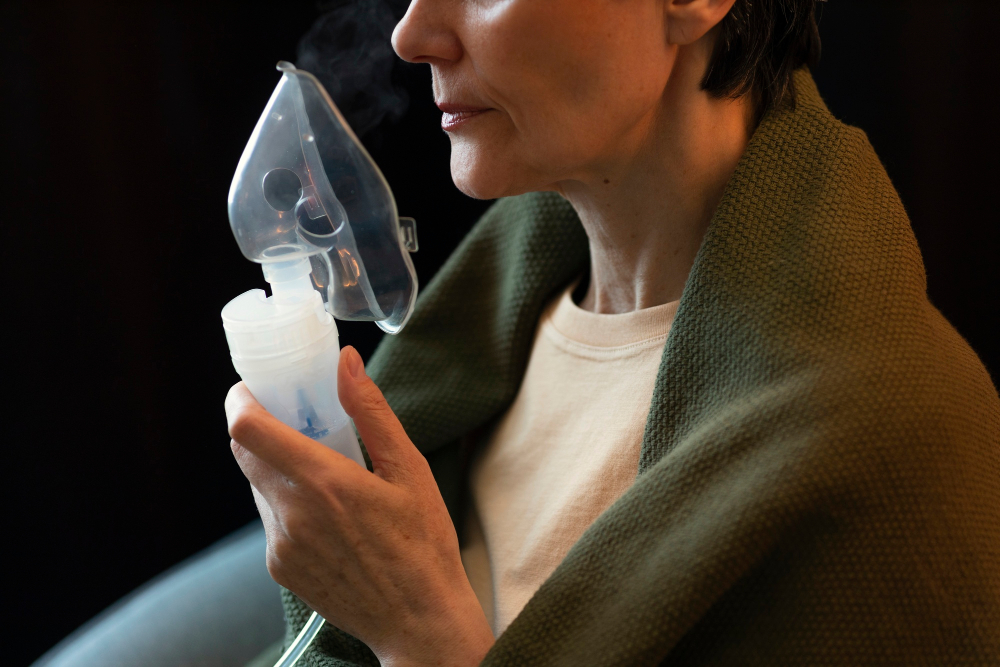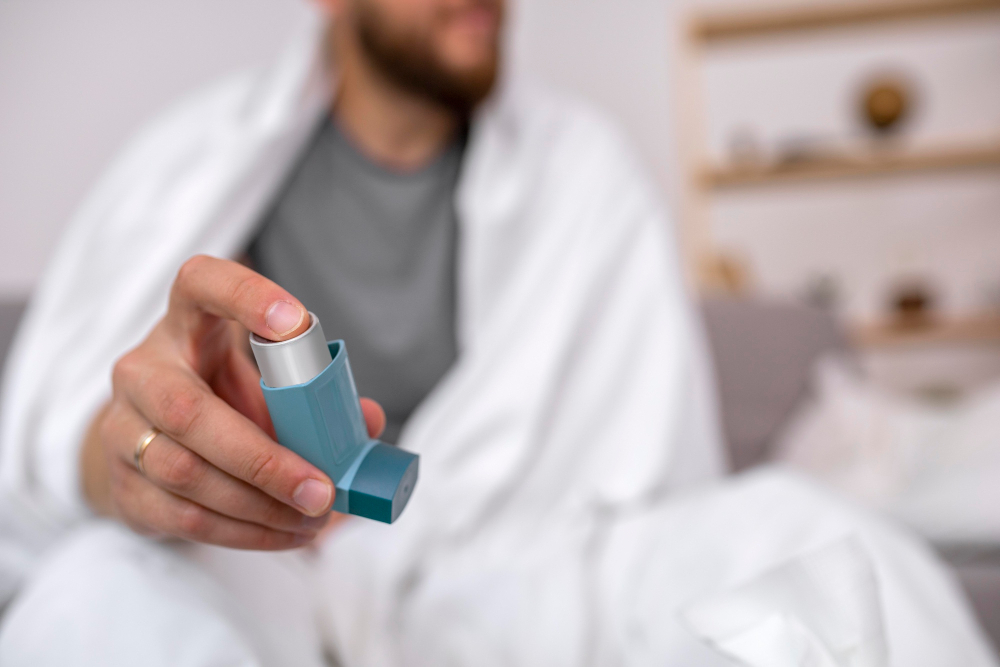
Asthmasense Powers Adaptive Respiratory Therapeutics Through Environmental Trigger Profiling
Asthma is not experienced in a vacuum, but is normally precipitated by outside stimuli including pollen, air, temperature, and humidity. Current inhalers address symptoms without consideration of the conditions under which they are being experienced. Asthmasense breaks this paradigm by combining real-time environmental trigger profiling with sophisticated algorithms that manipulate patient treatment based on changing conditions. This represents an intersection of environmental science and pulmonary medicine. By continuously monitoring air conditions and patient’s inhalation patterns, the device offers user-specific suggestions and alerts. Concurrently, its adaptive respiratory therapeutics capability enables dynamic adjustment of treatment protocols so that patients get timely modification of therapy. In Canadian patients, where seasonal allergies, wild fires, and cold winters play a major role in impacting asthma, application of environment-specific profiling and adaptive care presents a distinguishing advantage. Asthmasense is not just a device, but an interactive partner that renders asthma care an active, ongoing process to be individually fit to each patient’s environment and physiology.
The Role of Environmental Triggers
Asthma is not experienced in a vacuum, but is normally precipitated by outside stimuli including pollen, air, temperature, and humidity. Current inhalers address symptoms without consideration of the conditions under which they are being experienced. Asthmasense breaks this paradigm by combining real-time environmental trigger profiling with sophisticated algorithms that manipulate patient treatment based on changing conditions. This represents an intersection of environmental science and pulmonary medicine. By continuously monitoring air conditions and patient’s inhalation patterns, the device offers user-specific suggestions and alerts. Concurrently, its adaptive respiratory therapeutics capability enables dynamic adjustment of treatment protocols so that patients get timely modification of therapy. In Canadian patients, where seasonal allergies, wild fires, and cold winters play a major role in impacting asthma, application of environment trigger profiling and adaptive care presents a distinguishing advantage. Asthmasense is not just a device, but an interactive partner that renders asthma care an active, ongoing process to be individually fit to each patient’s environment and physiology.
Adaptive Respiratory Therapeutics in Practice
It’s not a static cure that it needs to adapt with the evolving physiology and environment of the patient. Asthmasense uses AI and real-time data sensing to suggest tailor-made changes through adaptive respiratory therapeutics. It can be in terms of warning the patient to pre-treat, varying or delaying dosing, or notifying physicians when patterns indicate deteriorating lung function. In contrast with conventional inhalers, which dispense medication irrespective of context, Asthmasense combines real-world signals with treatment. Canadian providers can gain by tailoring treatment to the local environment, whether tackling grass pollen exposure in Ontario, cold-triggered stimuli in Alberta, or wildfire smoke in British Columbia. Adaptive respiratory therapeutics contends that treatment is not static but dynamic, responsive to changes in the environment from day to day and to the individual patient requirements. Through adapting to the patient, this system provides an active model of care that anticipates as opposed to responding to respiratory distress, a paradigm shift in chronic disease management.
Bridging Environmental Data with Patient Outcomes
Environmental monitoring is only useful if it drives action-oriented care. Asthmasense achieves this by connecting environmental trigger profiling with personal symptom diaries, medication compliance, and inhalation performance. This builds an individual cause-and-effect map. Patients are able to observe how exposure to particular triggers is associated with decreased lung performance and are thus able to change behavior or avoid high-risk environments. Doctors receive in-depth analysis showing whether poor outcomes are due to environmental conditions, technique failure, or compliance breakdowns. With adaptive respiratory therapeutics integrated into the model, care plans remain dynamic and evolve as new patterns are identified. For Canadian healthcare systems, that translates into improved resource allocation, reduced emergency visits, and improved long-term planning. Finally, Asthmasense demonstrates how environmental science and medicine can be integrated to produce real advances in patient care.
Canadian Relevance and Public Health Benefits
Canadian asthma is particularly influenced by its geography and climate. Cold winter air, pollen-filled summer, and wildfire seasons are all factors contributing to high exacerbation rates. Asthmasense reverses these with accurate environmental trigger profiling to ensure Canadian patients receive alerts that match their surroundings. Anonymized aggregation, for public health use, can unlock regional trends that drive intervention activities like air quality alerts or prevention programs. Adaptive respiratory therapeutics also enable equitable care through anticipatory information even in remote or under-served areas where access to respiratory experts is limited. By providing people with timely information and responsive treatment, Asthmasense decreases pressures on hospitals and enables patients throughout the country to experience effective treatment. In this manner, the product not only enhances individual health results but also supports national resilience against diseases of chronic respiratory illness.
Industry Innovation and Future Potential
Whereas most devices are simply handling adherence reminders or dose counting, Asthmasense differentiates itself by combining environmental trigger profiling and adaptive respiratory therapeutics. Between them, these address the two most critical asthma treatment gaps: recognizing outside triggers and adapting therapy to them. As precision medicine is being introduced in health systems worldwide, this functionality places Asthmasense at the forefront of digital respiratory technology. For investors and decision-makers in Canada, it illustrates the promise of medical devices to provide clinical and social value. Beyond asthma, the concepts of environmental profiling and adaptive therapy are applicable to COPD and other lung diseases, opening up an entirely new class of networked treatments. In setting a new standard for innovation, Asthmasense points the way to the future of chronic disease management, intelligent, adaptive, and firmly embedded in the everyday.
Conclusion
Asthma has long been treated reactively, addressing attacks once they have happened and not preventing them from happening. Asthmasense upends this paradigm with the use of environmental trigger profiling and responsive respiratory therapeutics. By ascertaining what ambient factors induce symptoms and adjusting therapy in real-time accordingly, the device provides patients with an active, individualized solution. This not only decreases hospitalization and enhances quality of life but also supports Canadian healthcare values of prevention and efficiency. For physicians, the infusion of real-time patient and environmental information offers unprecedented visibility into treatment effectiveness, facilitating evidence-based optimization. For patients, empowerment is understanding what outside factors influence them most and how to adjust accordingly. With respiratory disorders still testing the health care system, Asthmasense is a vital technology that unites medicine, technology, and environmental science. Asthmasense’s future vision demonstrates the potential of medical devices to be transformed into smart companions that learn continuously to give quality health care.



